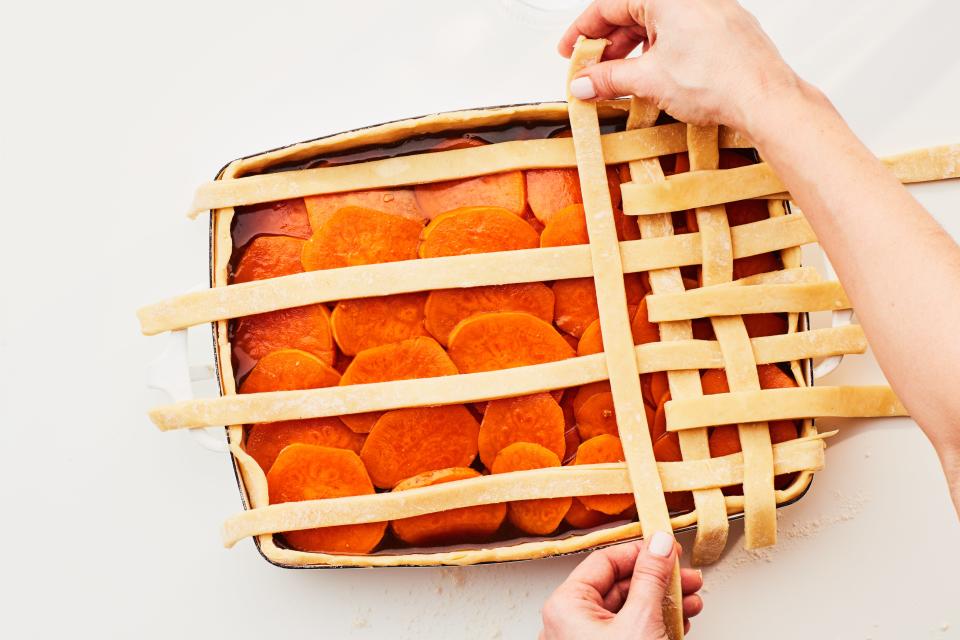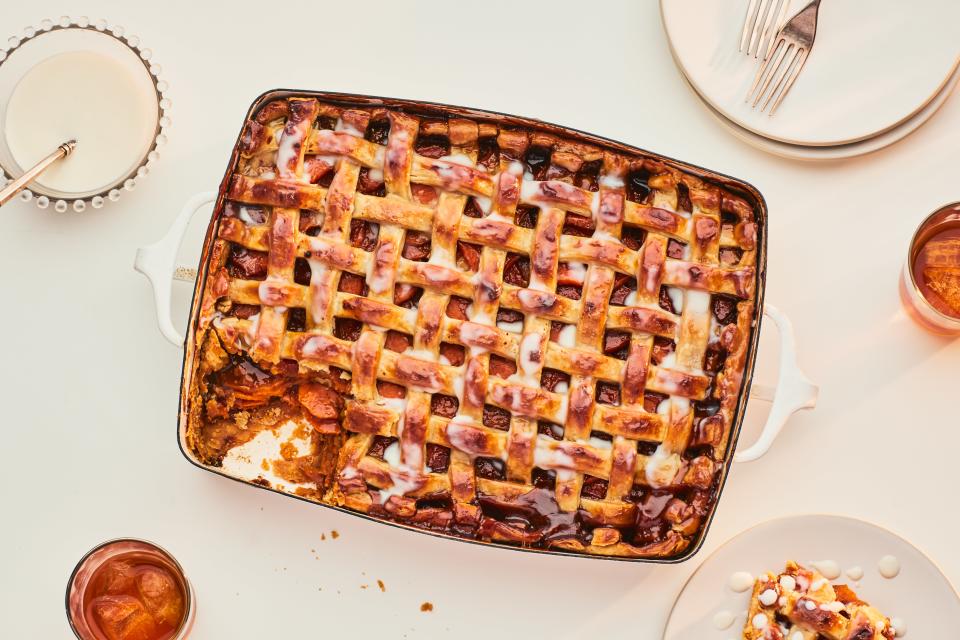This Sweet Potato Cobbler Is the Thanksgiving Dessert You Didn't Know You Were Waiting For

One pie is not enough to feed your Thanksgiving crowd—and yet, one pie tin (and the time to make one pie, and one pie only) is all you've got.
The solution? The sonker, a variation of a cobbler that's baked in a casserole dish, wrapped in pie crust, and primed to feed the masses. (Bonus: the version I'm proposing takes the place of both sweet potato casserole and pumpkin [or sweet potato] pie on your holiday table.)
Like so many iterations of cobbler, the sonker has variations. You can find them stuffed with fruit or sweet potato, and topped with a biscuit topping, a cakelike batter, or with a bottom crust or a top crust (or both).
But there's one distinguishing trait that makes all of these variations a sonker, and that trait is that, instead of peppered throughout the country, all these variations are found in one place: Surry County, North Carolina.

Sweet Potato Sonker with Milk Dip Inset
In April McGreger's cookbook, Sweet Potatoes, the author pinpoints the dessert's origin even more acutely, to Mount Airy—the home of Andy Griffith and inspiration for the fictional town of Mayberry. That was there where Kim Severson of the the New York Times traveled to uncover the hallmarks of the dish. What she found was an any-fruit-goes mentality—as long as that fruit is baked in a deep-dish 13-by-9-inch pan and practically swimming in sweet syrup, it counts. (McGreger writes that peaches are the most popular sonker filling, narrowly followed by sweet potatoes.)
It was the sweet potato version in Ronni Lundy's Appalachian-focused cookbook, Victuals, that caught my eye recently. It sports layers of sliced, par-cooked sweet potato laced with dark, rich sorghum syrup, all of which is encased in a bottom crust and topped with lattice. A "milk dip" glaze (a reduction of milk, sugar, cornstarch, and vanilla that's poured on top of the sonker mid-bake, adding richness and a chewy bite) finishes the thing off.
We made that variation here in the Epicurious Test Kitchen and it was just as delicious as it was large—exactly what you want in a Thanksgiving dessert. The trick is to boil the sweet potatoes until they are just fork-tender. Removed from the water and cooled, the potatoes are then sliced and layered on top of uncooked pie crust in a casserole dish. Lundy then instructs to reserve 1 1/2 cups of the potato cooking liquid. For even more flavor, I suggest reducing all of the cooking liquid until it reaches 1 1/2 cups and using that to make the sorghum-sweetened liquid that's poured over the sliced potatoes. Lundy's version doesn't contain any spice, but a bit of cinnamon, some ground ginger, or a bit of allspice wouldn't be out of place—whatever you like in pumpkin pie will work beautifully here.

Sweet Potato Sonker with Milk Dip Inset 3
To serve a sonker, forget about precious, perfect slices. Instead, take a serving spoon and dig right down through the bottom crust. The potatoes and double crust soak in the juices so it's not quite as saucy as the fruit versions. But that's no matter: a glug more of that milk dip (instead of or in addition to whipped cream) gives the dish just the syrupy rich finish it needs.
As for what to do with that pie plate? This Persian rice dish makes a killer Thanksgiving side.


